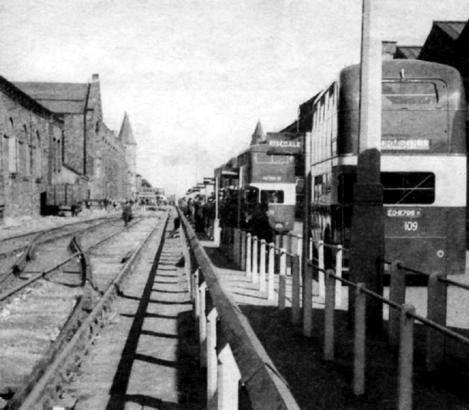Ferry Road ‘Triangle’ & Cavendish Villas
At the northern end of Barrow Island lies the 'Ferry Road Triangle.' Covering an area formerly known by the field
names, Crow Nest, Great New Close, Little New Close, Moss, Cow Park and Middle Park; the Ferry Road area has always
been known as the 'Triangle,' because the shape of the estate is truly a triangle.
AS THE CROW FLIES. The Crow Nest
Hotel was built in 1888 six years after the
first application for a provisional licence by
Mr Robinson on behalf of Thomson's
brewery. In September 1887 the
application was finally granted. The hotel
took its name, not from anything nautical,
but from the name of the three fields that
surrounded it: Crow Nest, Near Crow
Nest, Middle Crow Nest.
Opened in May 1888 it was described
by the Barrow News as one of the best-
appointed hotels in Barrow. From this
start, Walton Lee, elected Town Councillor
in 1886 envisaged an estate for the
workers literally within spitting distance of
their workplace.
Like most plans for Barrow in those
euphoric times, Walton Lee's plans for the
estate was over-ambitious and in the end,
only partially completed. Having said that,
had his, and other housing projects been
completed to their original specification,
the desperate housing shortage caused by
the influx of thousands of munitions
workers during World War I, would, to a
degree, have been averted. That problem,
however, is twenty-five years into the
future when Lee unveiled his plans for a
worker's village.
In the 19th century, some industrial
magnates were driven, either by religious
zeal or a genuine desire to improve the
worker's lot or plain old guilt, to erect
small townships to house their employees.
An excellent example is Port Sunlight on the Wirral, built by Lord Leverhulme of Sunlight soap fame. Port Sunlight is
beautifully laid out in the best English village style with plenty of trees and open spaces. A village green and a pub
complete the illusion of living in an olde English utopia. A very short walk behind this façade, for that, is what it is, reveals
Lever Brother's massive factory in all its steam belching glory.
Barrow Island, on the other hand,
didn't get a picturesque village it got
tenements and back to back houses in the
best Lancashire mill-town tradition. To be
fair to Walton Lee, he wasn't an industrial
magnate, but a speculative builder and his
proposal for Ferry Road did include
provision for a rugby pitch. Shipyard
expansion and the proliferation of rail links
put paid to the idea, but his original
sketches do show one try line level with
the Crow's Nest and the rest of the pitch
stretching up Ferry Road over what is now
a car park and Bridge Road. Walton Lee's
vision was of an estate built close enough
to be convenient for all the main centres of
employment, (practically fall out of the
front door and clock on), yet only a ferry
ride away from rural Walney where free
time could pleasantly be spent.
Lee could sense a desperate need
[and he would have needed to be
comatose not to] for decent housing for
the workers. With this in mind, he had
already bought land at 5/- [25p] a square
yard in 1883 and started work on Mast
Street, later christened with the more
attractive name Cameron Street. Rudder
Street [Earle Street] and Burnaby Street
followed in 1885. Like the majority of the
developments in Barrow at the time this
"estate" was not built by one company as
would usually be the case today, but by
many different builders over a period of
years as demand and prices rose and fell.
R. Daniel and W.J. Sandford also built
on Earle Street. Ferry Road was built
piecemeal between 1883 and 1905 by
amongst others Thomas Brown, and again
W.J. Sandford; on and off five different
builders were involved constructing Stanley
Road. Part of the estate at its eastern end:
Lily, Holly, Fern and Woodvine Avenues
were never built, only Ivy Avenue was
erected, the shortest, least tree-lined
avenue in the world.
The encroaching shipyard took over
John Shaw's Rope and Twine Works then
the land for the unbuilt houses, expanding
almost into the resident's kitchens.
Today the shipyard overshadows the
whole area with the massive Devonshire
Dock Hall (DDH) dominating the view, and
car parking being a significant problem for
the workers and the residents. When a
herd of buses brought people to work
there wasn't the same problem, see the
pictures [below] of them waiting for
shipyard workers in nearby, Bridge Road.
Now, instead of buses and trams
trundling past, loads weighing hundreds of
tons pass because of the stupidity of building sub sections nearly a mile away from where they are assembled.
CAVENDISH VILLAS
Built near Michaelson’s Mansion, and situated less than a mile away, these sandstone villas were not built on a budget
for the working man.
A fine row of sandstone villas was built in the late 1860s behind Michaelson's Mansion; they were called Cavendish
Park Villas. Built by the Furness Railway primarily for the managerial staff they were, from time to time, rented out to the
shipbuilding company and various people engaged on local projects. There they lived in a style, to which no doubt they
could easily become accustomed. Joseph Richardson, in Barrow: its history and development of 1881 lovingly describes
the villas:-
"To meet the requirements of officials [management] and employees, a handsome park was laid out behind
Michaelson House, in which a number of highly ornate semi-detached villas were erected."
Although the view from the front windows
is now obscured by BAE. when they were built
the residents enjoyed a splendid panoramic
vista across Buccleuch Dock to Rabbit Hill and
beyond to Roose. The villas each had a neat
garden and drive to the front, to the rear acres
of unspoiled parkland reached as far as Island
Road before another building could be seen.
Spacious rooms with parquet floors and all
mod-cons were the order of the day for the
lucky residents, who in 1871 included Captain
Reid, Harbour Master. In 1875 some of the
men who were busily forming Barrow's future
lived there, notably from the Furness Railway,
the Barrow Iron Ship Co., and the Barrow
Channel Dredging Co. Another resident was the
redoubtable Reverend Allen who, before the
first St John's church was opened in 1877, held
services in a room licensed for the purpose. At
that time Old Barrow came under the parish of
St George, so it fell to somebody from St
George's' to try and tame the wild navvies.
Senior Curate, the Reverend John Allen, was
just the man for those rough and ready times.
When The Reverend Allen first came to the island in
1871, diphtheria and smallpox were rife. Within a short
space of time, he had won respect, if not hearts and
minds, of the practically pagan navvies with his practical as
well as spiritual help. Reverend Allen believed in taking the
Word directly to the people. With his two sons he would go
around looking for drunken navvies, usually to be found
lying in sand-pits along the way. He would read them a
short tract then implore them to attend the Mission Room,
but if an immediate promise of attendance were not
forthcoming, their miserable souls would be saved there
and then - in the sand-pit; whether they liked it or not.
Except for two villas used, by the then, Vickers as a
clinic and their Photographic Department and one used by
the Sea Cadets as a base, the rest have been left to decay
in the recent past. Unfortunately, the decay has become
terminal. Without a thought to preservation, some of these
fine villas were demolished in 1991. At present vandalism
& arson has left the rest just a shell.
Just past Cavendish Park Villas land was leased from the Furness Railways to layout a tree-lined bowling green which
survived until the 1960s when it was concreted over to make the inevitable car park for Vickers employees.

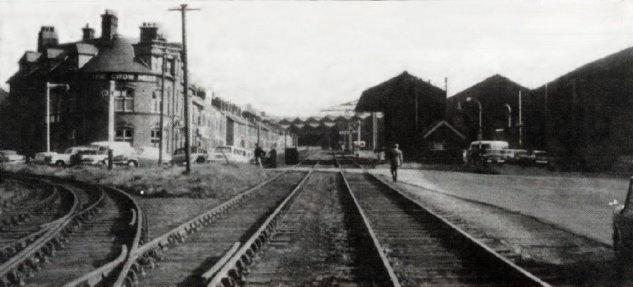
Somebody laid a railway line right through Walton
Lee’s proposed Rugby pitch.
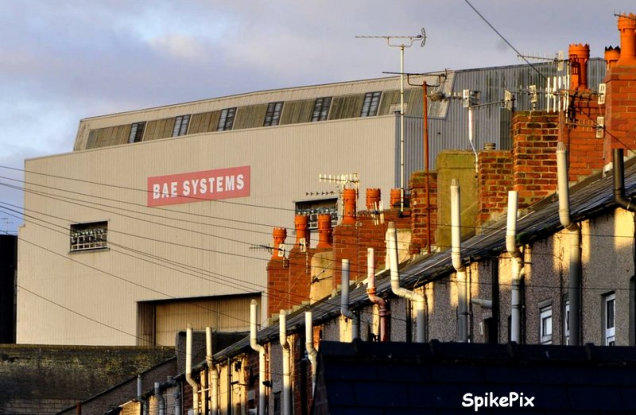

Cameron St 1910

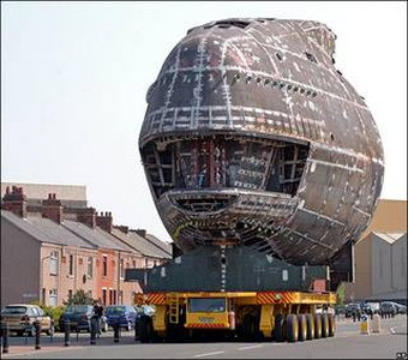


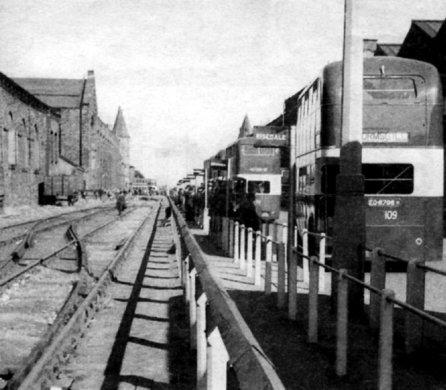
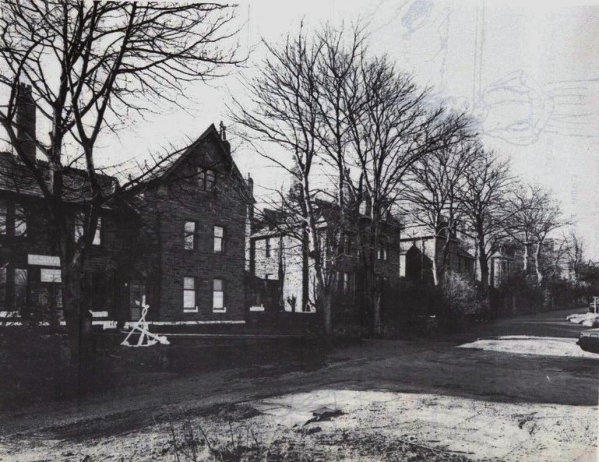


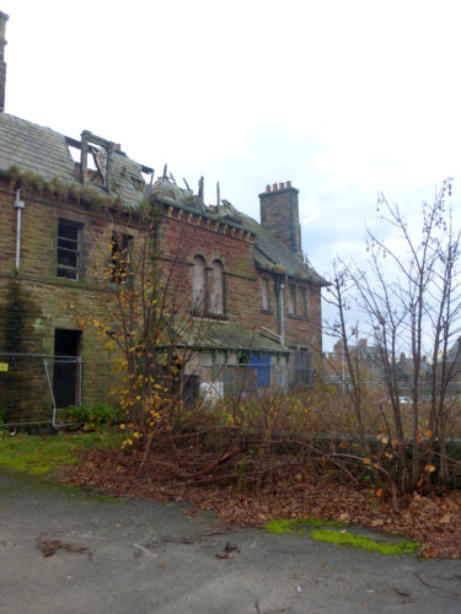

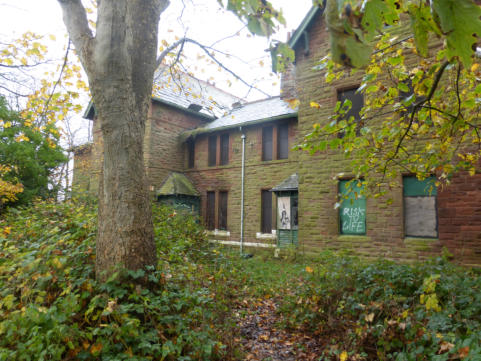

Today, wrecked and vandalised. Photos: Scott Heddles


New 1000 car park built on the site of the the GES
will hopefully relieve some of the parking problems on
Old Barrow. There never used to be a problem :) Below.
